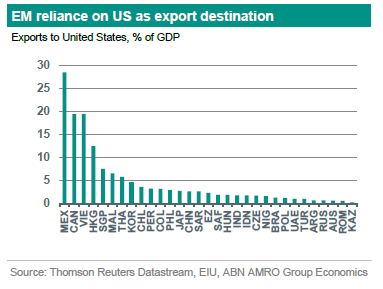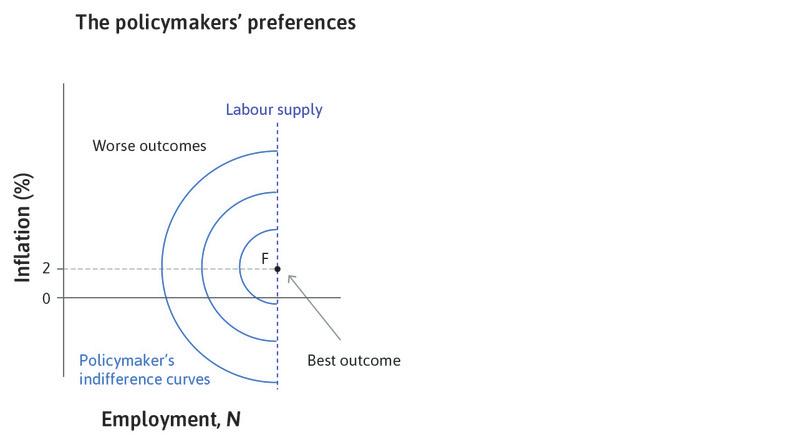Marginal revenue and marginal cost video
Contents:


This in turn can lead to a loss of sales or production overages which can result in revenue loss due to excess manufacturing costs. If the company plans on increasing its volume past that point, each additional unit of its good or service will come at a loss and shouldn’t be produced. When the line for MR intersects with the line for marginal costs, economists consider this the moment of maximized profit.
All investments involve risk, and the past performance of a security or financial product does not guarantee future results or returns. Keep in mind that while diversification may help spread risk, it does not ensure a profit or protect against loss. There is no guarantee that any particular asset allocation or mix of funds will meet your investment objectives or provide you with a given level of income. There is always the potential of losing money when you invest in securities or other financial products.
However, its average revenue will be $95 (($100 + $90) / 2 units sold). For this reason, a company must often decrease its price to increase its market share. By decreasing its price, the company will receive less marginal revenue for each additional unit sold. At some point, the market demand for additional units will drive the product price so low that it becomes unprofitable to manufacture additional units. To determine the optimal level of production, businesses once again can use the marginal revenue and marginal cost. The optimal level of production is where the marginal revenue equals the marginal cost.
Balancing the Scales of Marginal Revenue
From an economic standpoint, marginal revenue coincides with marginal cost in a way that establishes the standard for quantity and market price at a given time. This underlying process has the ability to affect multiple businesses across an entire industry, especially in a competitive market. Image SourceOnce you’ve started to track your company’s marginal revenue and marginal costs, you’ll be able to start calculating marginal profit. Wouldn’t you make the same profit ($140; total revenue – total cost)? It seems that producing 9000 is a waste of time because you’re not making any extra profit on that 1000 additional units.
We also know the change in quantity – we produced 200 units more than in the previous month, so we’ll input 200 into this field. First, we calculate the change in revenue by multiplying the baked volume by a new price and then subtracting the original revenue. Marginal profit is the profit earned by a firm or individual when one additional unit is produced and sold. Marginal revenue is often shown graphically as a downward sloping line that represents how a company usually has to decrease its prices to drive additional sales. Marginal revenue refers to the incremental change in earnings resulting from the sale of one additional unit. Determine the change in quantity sold – subtract the initial quantity of product from the current product quantity.

Taken together, marginal revenues and marginal costs are both tracked in order for companies to maximize their profits. Using the right analytics software will help you keep tabs on the most important KPIs for your business and make sure your revenue is under control at all times. By drawing insights from your performance and incorporating marginal revenue analysis into your business strategy, you’ll take your business to the next level and maximize profits. The first mistake is assuming that the marginal revenue will remain constant as more units are sold. Marginal revenue can change as the level of production and pricing changes.
If you sold one more t-shirt for $20, your total revenue would increase to $2,020. Therefore, the marginal revenue per additional unit sold is $2,000. Since the pricing is consistent, the MR will also maintain consistency regardless of the quantity produced. A rational business would then produce the quantity where the horizontal marginal revenue meets its slope of marginal cost. The marginal revenue curve is a graph that can represent the relation between the marginal revenue earned and the number of products sold.
Profit stops when the costs begin to exceed MR on a standard line graph. At this point, the production level is too expensive, and companies usually pivot with a new strategy or stop selling a specific product. Although you can use this formula if you have sold more than one additional item, keep in mind that you only need the selling price of one extra item to find a true calculation. The company developed and maintains technological products and services, namely Snapchat, Spectacles, and Bitmoji.
Relevance and Uses of Marginal Revenue Formula
The marginal costs of production may change as production capacity changes. If, for example, increasing production from 200 to 201 units per day requires a small business to purchase additional equipment, then the marginal cost of production may be very high. In contrast, this expense might be significantly lower if the business is considering an increase from 150 to 151 units using existing equipment. At some point, the company reaches its optimum production level, the point at which producing any more units would increase the per-unit production cost.
These metrics often get confused, but they’re all unique, and each one tells you something different about your business and the goods or services you produce. That’s where knowing your marginal revenue is really going to come in handy. With the example given in this lecture, what would occur if the market price falls to 0.4? The local, cheap suppliers ran out of oranges, so we have to move to other suppliers if we want to make and thus sell more juice. The new suppliers are probably slightly further away, so we have to make more costs for transportation. It’s also possible those suppliers charge a higher price for their oranges.
Marginal Revenue Analysis in Perfectly Competitive Market and Monopolies
It affects product price and production level depending on the industry. A business can take a look at its marginal revenue to figure out the scope of its earnings. So a company that is looking to maximize profits would want to raise its production up to the level where the marginal revenue is equal to the marginal cost. Marginal revenue is an accounting term that tells companies how much revenue selling an additional unit will earn for them. Conversely, the marginal revenue also tells users how much making another unit will cost.
The Role of Pro-Growth Tax Policy and Private Investment in the … – Tax Foundation
The Role of Pro-Growth Tax Policy and Private Investment in the ….
Posted: Thu, 04 May 2023 10:30:11 GMT [source]
A change in revenue is a difference in total revenue and revenue figure before the additional unit. Marginal revenue is important because it is a crucial indicator regarding the most idea level of activity a company should undertake. For example, imagine a company will make an additional $1,000 if it increases sales from 200 to 220 goods. The average marginal revenue received for each of these additional 20 units is $50/each.
When expected marginal revenue begins to fall, a company should take a closer look at the cause. The catalyst could be market saturation orprice wars with competitors. For example, increased production beyond a certain level may involve paying prohibitively high amounts of overtime pay to workers.
How to calculate marginal revenue
A competitive firm’s price equals its marginal revenue and average revenue because it remains constant over other varying output levels. A firm’s average revenueis its total revenue earned divided by the total units. A competitive firm’s marginal revenue always equals its average revenue and price. This is because the price remains constant over varying levels of output. In a monopoly, because the price changes as the quantity sold changes, marginal revenue diminishes with each additional unit and will always be equal to or less than average revenue.
Regulations and Changes Regarding The Mortgage Interest Tax … – North Forty News
Regulations and Changes Regarding The Mortgage Interest Tax ….
Posted: Fri, 05 May 2023 19:27:43 GMT [source]
When how to calculate marginal revenue revenue falls below marginal cost, firms typically do a cost-benefit analysis and halt production as it may cost more to sell a unit than what the company will receive as revenue. Otherwise, we will not be able to sell all the units, which is also known as the law of diminishing margin. So, the more you sell after a normal limit, the more the price will diminish and, accordingly, so will revenue. Marginal Revenue is the revenue that is gained from the sale of an additional unit. It is the revenue that a company can generate for each additional unit sold; there is a marginal cost attached to it, which must be accounted for.
What Does It Mean If Marginal Revenue Is Negative?
Generally speaking, marginal revenue is going to stay about the same for most companies and most products, most of the time. That’s because businesses generally sell the same goods or services at the same prices, and only change their prices occasionally. Marginal cost is the additional costs incurred when you produce one additional unit of your product. Marginal revenue is the additional revenue you’ll receive when you produce that additional unit.
- Marginal revenue product explains the additional revenue generated by adding an extra unit of production resource.
- Now that we understand what these curves are and what their function is, let us discuss marginal revenue in the context of marginal cost.
- Suppose the Juicer you have capacity of juicing 10,000 oranges a day efficiently, and after juicing 10,000 oranges, it gets heat up, consumes more energy and produces juice at higher cost.
Company management uses the marginal revenue figures to determine the demand for their products, plan their production schedule, set prices for their products, and determine sales percentages. We can calculate marginal revenue for a company by dividing the change in total revenue by change in total output quantity produced by the company. Marginal revenue equal to the sale price of a single additional item sold. Marginal revenue can be defined as the increase in revenue, as a result of the one additional unit sold.
Understanding the Law of Diminishing Returns – Entrepreneur
Understanding the Law of Diminishing Returns.
Posted: Fri, 07 Apr 2023 07:00:00 GMT [source]
INVESTMENT BANKING RESOURCESLearn the foundation of Investment banking, financial modeling, valuations and more. Plan production schedules – Based on the demand of the product in a market plan for production schedules. Supply is a fundamental economic concept that describes the total amount of a specific good or service that is available to consumers.
A thorough and regular analysis of MR helps business leaders understand the increase in revenue from one additional unit of output at a specific time. Depending on the calculation, businesses can choose to halt or continue production, which has serious implications for both the supply chain and the consumer buying cycle. The marginal revenue calculation serves to quantify production level changes.
Over a certain level of output, Marginal revenue can remain constant as it follows the law of diminishing returns and Marginal revenue can eventually decelerate as the output level increases. Firms in the perfect competition market continue producing output until marginal revenue equates marginal cost. Learn about rational production quantity using an orange juice example.
- To better illustrate this, let’s consider a hypothetical situation in which you’re the producer of the world’s best Magic 8 Balls.
- Simply put, marginal cost is the amount of money you’ve got to spend each time you decide to make one more unit of a product or service that you’re offering.
- For a monopolist, the marginal benefit of selling an additional unit is less than the market price.
- Get instant access to video lessons taught by experienced investment bankers.
This is because the price level is dictated by the market and companies don’t end up having much say over the price points. As long as you remember that marginal revenue is the revenue that you get from the sale of the additional unit then you should be able to calculate it easily. For example, a toy manufacturer could try to measure and compare the costs of producing one extra toy with the projected revenue from its sale. Suppose that, on average, it has cost the company $10 to make a toy. All you’ve got to do to find your marginal revenue is to subtract your revenue before the last unit you sold from the total revenue after the last item that you’ve sold.
Here, the $6.25 profit from the second shirt becomes your marginal benefit. That means the marginal cost of producing each extra fence post in your sawmill is $10. When your company can increase its marginal revenue, it should serve as a sign to investors or shareholders that your business isn’t producing enough in relation to demand.









You must be logged in to post a comment Login